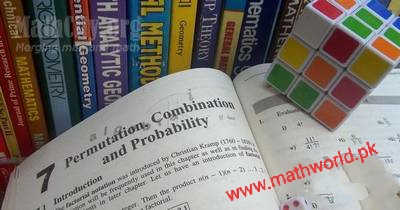
Chapter 07: Permutation, Combination and Probability
A permutation is an arrangement of objects in a specific order. The number of permutations of n objects taken r at a time is denoted by nPr, which is equal to n!/(n-r)!, where n! (n factorial) is the product of all positive integers up to n. For example, the number of ways to arrange the letters A, B, and C in a line is 3P3 = 3!/(3-3)! = 6.
A combination is a selection of objects without regard to order. The number of combinations of n objects taken r at a time is denoted by nCr, which is equal to n!/(r!(n-r)!), where n! (n factorial) is the product of all positive integers up to n. For example, the number of ways to select 2 cards from a deck of 52 cards is 52C2 = 52!/(2!(52-2)!) = 1,326.
Probability is the likelihood of an event occurring, expressed as a number between 0 and 1. The probability of an event A is denoted by P(A), and it is equal to the number of favorable outcomes of A divided by the total number of possible outcomes. For example, the probability of rolling a 6 on a fair die is 1/6.
The rules of probability include the addition rule, which states that the probability of either A or B occurring is equal to the sum of their individual probabilities minus the probability of both occurring together (i.e., P(A or B) = P(A) + P(B) – P(A and B)), and the multiplication rule, which states that the probability of both A and B occurring is equal to the product of their individual probabilities (i.e., P(A and B) = P(A) * P(B)).
In summary, permutation, combination, and probability are all concepts in mathematics that are used to count and analyze outcomes of events. Permutations are arrangements of objects in a specific order, combinations are selections of objects without regard to order, and probability is the likelihood of an event occurring. The rules of probability include the addition and multiplication rules, which are used to calculate the probability of multiple events occurring together.
Contents & summary
- Introduction
- Exercise 7.1
- Permutation
- Exercise 7.2
- Permutation of Things not all Different
- Circular Permutation
- Exercise 7.3
- Combinations
- Complementary Combination
- Exercise 7.4
- Probability
- Probability that an Even does not Occur
- Exercise 7.5
- Estimating Probability and Tally Marks
- Exercise 7.6
- Addition of Probabilities
- Exercise 7.7
- Multiplication of Probabilities
- Exercise 7.8

